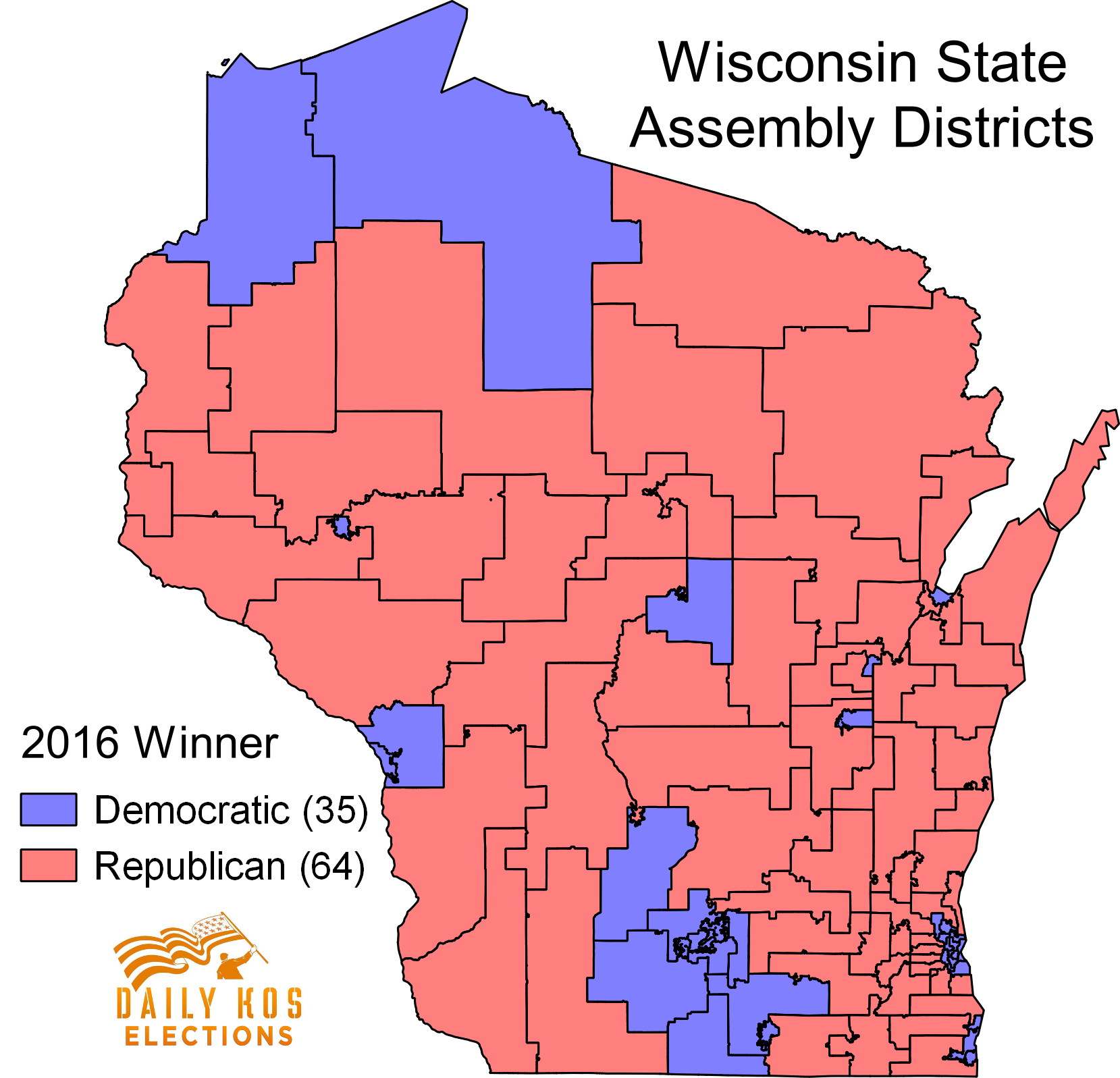Foes of partisan gerrymandering scored a monumental victory Monday when a three-judge federal panel struck down the Republican-drawn map of the Wisconsin state Assembly as an unconstitutional partisan gerrymander. State Senate districts could also be affected since they consist of three nested Assembly districts. Wisconsin is one of the most heavily gerrymandered states in the country and Democrats won the statewide popular vote in 2012, but this map helped give Republicans a majority of seats. But critically, this new ruling could reverberate well beyond Wisconsin because the case now sets the stage for a future Supreme Court decision that could set major limits on partisan gerrymandering nationwide.
An earlier Supreme Court ruling called Vieth v. Jubelirer previously held that partisan gerrymandering could be unconstitutional. But in that case, Justice Anthony Kennedy, as the deciding vote, refused to strike down the particular map in question for lack of a manageable standard to determine when impermissible partisan gerrymandering takes place. The plaintiffs in Wisconsin proposed one such standard called the “efficiency gap” that would statistically look at how many votes get “wasted” in each election. If one party routinely wins landslide victories in a few seats while the other party wins much more modest yet secure margins in the vast majority, it could signify a gerrymander that has gone so far as to infringe upon the rights of voters to free speech and equal protection.
Republicans will certainly appeal this ruling directly to the Supreme Court. With Trump’s upcoming nominee almost certain to side with the other three arch-conservatives on the court, Kennedy will once again act as the swing vote. Whether the plaintiffs will be able to convince him that their efficiency gap test satisfies his precedent in Vieth is the key unknown. If they succeed, we could be entering a new era where courts around the country start imposing new restrictions on partisan gerrymandering. When Republicans have gerrymandered 55 percent of congressional districts and most state legislatures nationwide, that could have far-reaching consequences, indeed.
 Click to enlarge
Click to enlarge
The above map shows the districts in question. Donald Trump carried Wisconsin by just a 0.8 percent margin, but Republicans won a crushing majority of 64 seats to just 35 for Democrats in 2016.


